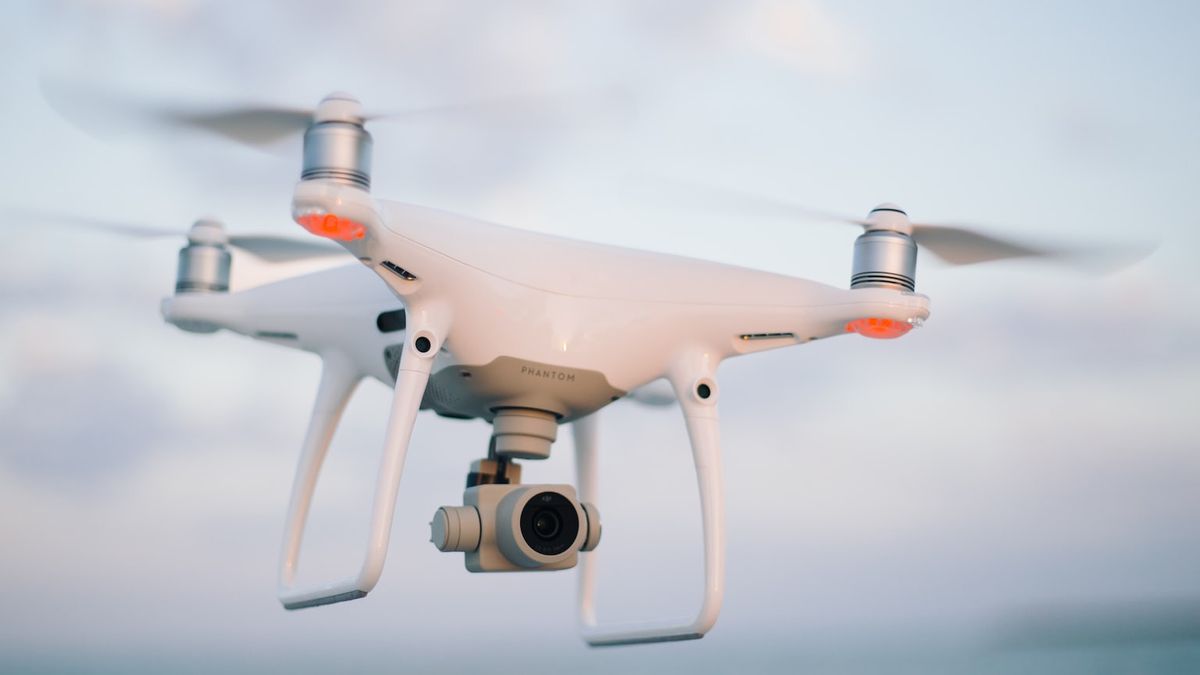YOGYAKARTA - The application of electronic traffic law enforcement (ET:LE) continues to be intensified by the police. The ETLE ticket is not only used on static and mobile cameras, but has also been developed in the form of drones. So how does a drone ETLE ticket work?
The ELTE ticket via air using a central drone is in the testing phase. The ETLE drone began testing in Central Java by the Directorate of Traffic (Ditlantas) of the Central Java Police on Tuesday, January 24. The test was carried out at the East Brebes Toll Exit (Brexit) and on Jalan Ahmad Yani, Tegal City.
Ditlantas Polda Central Java carried out drone flights in collaboration with the Indonesian Drone Pilots Association (APDI). The implementation of the trial was led by Iptu Doohan Octa Prasetya, Kanit V Sigar Sub-Directorate of Gakkum Ditlantas Polda Central Java.
"We are working with the Indonesian Drone Association which has been certified to fly the drone ETLE," said Iptu Doohan.
Ditlantas Polda Central Java itself plans to apply a drone ETLE ticket in 35 districts/cities in Central Java. So how does the drone ETLE ticket work?
The police are developing the use of ETLE ticketing technology using drones so that the traffic monitoring process becomes easier. How to work on a ticket for an ETLE drone is similar to a mobile and static ETLE ticket.
The drone ETLE work mechanism is as follows:
The mechanisms used in static and mobile ETLE ticketing are the same. The difference in ticketing for drone ETLE with both types of tickets is only in the installation and flexibility.
The implementation of the ETLE ticketing system for drones has been studied in length and mature. Drones will be one of the supporting devices to carry out patrols. Initially, this unmanned aircraft system will only be used to monitor traffic.
For example, when there is a severe traffic jam at a road location, the drone camera will take pictures of the situation. Then the shots will be sent to the command center for further processing.
But not only that, the unmanned aircraft will also be used to crack down on traffic violations. The drone camera can crop the number plates and violations committed by the driver, including speed limits.
The drone aircraft was created for surveyors and monitoring. This drone is equipped with a battery that can last up to 3 hours. In addition, the camera lens is also very sophisticated because it can be used for zoom up to 40 to 80 times the usual camera.
The drone's ETLE ticket has advantages over static and mobile electronic ticketing. The drone's ETLE is more flexible, so there is no need to be permanently installed on a road like static ETLE. It's also different from mobile ETLE that officers have to carry or through patrol cars.
ETLE drones can be more dynamic in moving locations and use them more practically. ETLE drones are controlled using pilot systems from land via device. But not everyone can control or become a drone pilot. Only people who are experts or certified can use the tool.
In addition to its more practical implementation, the ETLE drone also has a wider fishing power. The ETLE drone can take image angles from the sky, so it can monitor wider traffic. In contrast to static ETLEs which can only take one-way images. While mobile ETLE can only take pictures from one point of view.
However, not all motorists who are photographed by the ETLE drone will be dealt with. There are certain mechanisms to take action against motorists who violate traffic. The police will validate first how the apparent clarity of the driver who violates it looks.
That's a review of how the drone ETLE ticket works and the advantages are compared to static and mobile ETLE. The drone ETLE ticket has been designed to facilitate traffic monitoring and violation operations. In addition, this device is also equipped with a special parachute to anticipate signal disturbances to weak batteries.
Stay up to date with the latest domestic and foreign news on VOI. You present the latest and most recent nationally and internationally.
The English, Chinese, Japanese, Arabic, and French versions are automatically generated by the AI. So there may still be inaccuracies in translating, please always see Indonesian as our main language. (system supported by DigitalSiber.id)













